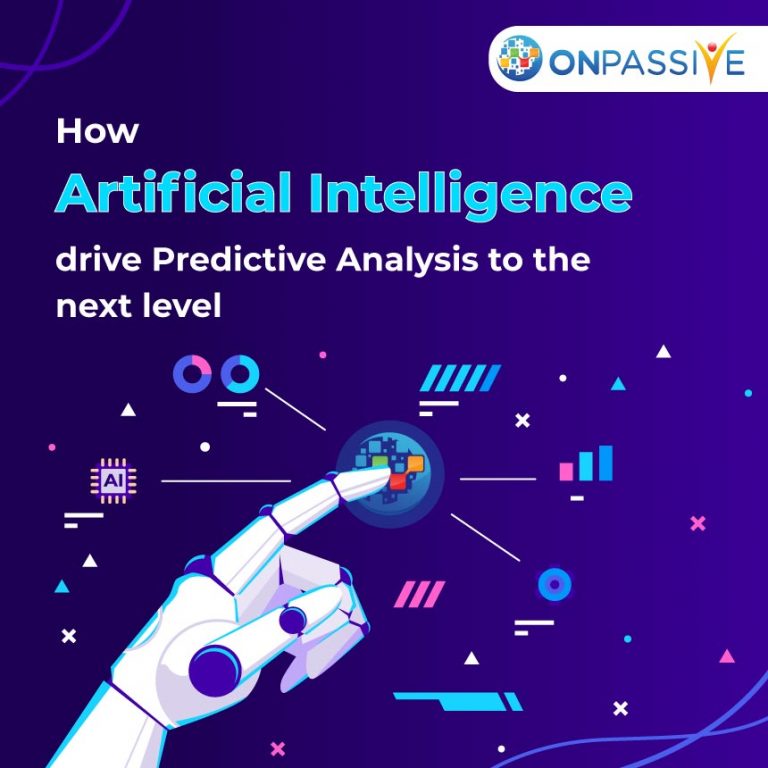
Scientists pioneer in innovative ways of creating revolutionary healthcare insights through artificial intelligence prediction.
Based on a patient’s eye scan, their system can make predictions against the patient’s risk of experiencing a severe cardiac incident.
It achieves by training a Machine Learning system with medical data, including the age, blood pressure, and smoking habits of three hundred thousand patients.
What is meant by Predictive Analytics?
Advanced analytic solutions consist of a comprehensive combination of elaborated methodologies, technologies, and infrastructures that takes an analytical process beyond traditional data processing. The purpose ranges from making predictions to bringing light actionable insights.
Predictive analytics consider these four axes: prediction, speed, business, and accessibility.
1. Predictions:
Predictive Analytics are beyond the standards that allow for producing simple descriptions. In a few words, reports make decision-makers in understanding current state-of-business, while predictions empower them to implement action plans that may or may not happen next.
2. Speeds:
The strength of prediction capabilities lies an inability to come up with actioned outcomes quickly. It compared to a business intelligence required and sometimes even days to see calculations run their course to the end.
3. Businesses:
These analytics are business-oriented by their nature from the statistical research where you search in trending within a dataset.
4. Accessibilities:
The combination of three previous axes tends to strengthen a need for business accessibilities.
Market Analysis and its importance
Advanced and predictive analytics software market studied worldwide on the trends and momentous evolutions within the analytics market. It states that we are reaching a point where companies have a perfect knowledge that is still a relevant value of business intelligence tools that derives the most significant benefit from the value of forward-looking analytics called as predictive analytics.
The Scope of Predictive Analytics
Every modern business domain gains maximum potential from predictive analytics. It is critical with possession of sufficiently large, various, detailed, and reliable historical data enriched with the latest types of intelligent data coming from smartphones, connected devices, sensors, logs.
All kinds of companies must be determined and consistent in their desire to leverage their data in optimizing their processes.
It applies equally to fraud detection, processes optimization, costs reductions, market trends anticipation, and the discovery and innovation of new business opportunities.
1. Fintech and Banking
The use of a credit card with abnormal behaviour reveals by establishing models and observing specific patterns of inappropriate usage are known as fraud detection, which applies to other industries.
Social media abounds this data that financial companies are exploiting that better understand, get closer to, better satisfy, and ultimately retain their customers. It provides them with precious data that can help them predict the behaviour of the market and their customers.
2. Oil and Gas
It is a domain that takes massive advantage of the Internet of Things (IoT) precisely, IIoT (Industrial IoT).
For example, General Electric is using data from vibration and thermography systems and also extraneous pieces of information that extrapolate data, establish correlations, and make predictions in a marine exploration or extraction site.
3. Retails
Prediction systems are quite observed in the retail industry to improve engagements and personalization of consumers as well as the delivery process or stock management.
These systems, combined with marketing research and actions, could that aims to anticipate trends the adoption rate of a new brand or service.
4. Industries
Business domains entirely take advantage of its data, from IIoT data, implementing predictive maintenances. The smart devices, sensors, and intelligent devices operate to produce tons of data and logs that they leverage through models and advanced algorithms. It is critical and allows them to optimize their production with reduced risk and costs. The main point is that IIoT devices allow them for a better understanding of their systems to work and maintain whether they are making industrial machinery, airliners, trucks, or wind turbines.
How AI drives Predictive Analytics to Next Level?
It expresses a conviction that companies leverage AI starts with a predictive analytics machine learning. The states that machine learning is fundamental to artificial intelligence.
It explains how artificial intelligence enhances predictive analytics:
Healthcare
Machine learning models using echocardiographic data that improves mortality forecasting. The amount of data that physicians have their disposal so substantially that they don’t have material time to extract their maximum potential.
A Health data science team worked on data from 170,000 patients for a total of three hundred and thirty thousand Doppler ultrasonography results. Machine learning models and related algorithms improve their search field.
Retailing
Alibaba is crediting their success to artificial intelligence.
This lab crafted a system predicting consumer wants, where the models are regularly updated with each individual through AI taking into account purchase history, browsing history, and online activities called E-Commerce Brain.
I-ERP (Intelligent-ENTERPRISE RESOURCE PLANNING)
Enterprise Resource Planning software solutions provide organizations that manage their businesses. They integrate and centralize business data, processes, and workflows across different departments in the enterprise to offer 360-degree views of activities.
I-ERPs designed to track, route, and analyze processes, and make forecasting. They handle repeated tasks and utilize voice recognition, machine vision, and natural language processing to interact with humans and assist them.
Conclusion:
Predictive analytics takes advantage of enormous technological breakthroughs of data intelligence era including
- Big Data analytics
- Internet of Things
- Cloud
- AI.
Artificial intelligence groups together several technological innovations include:
· Speech recognition
· Virtual assistants (bots)
· Machine learning
· Deep learning
· Machine vision
· Biometrics
· Robotic Process Automation (RPA)
· Text analytics
· Natural Language Processing.
Predictive analytics became stronger and gaining more credibility in the land of digital transformation. The Effect of Artificial Intelligence from Fantasy to Reality


